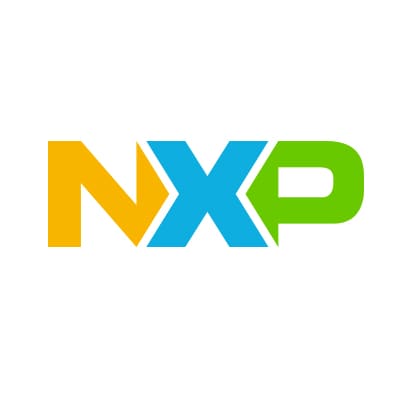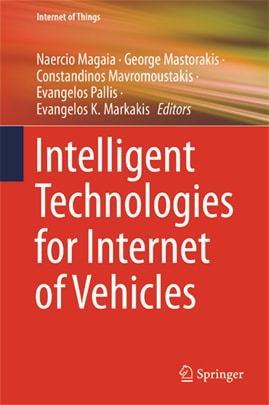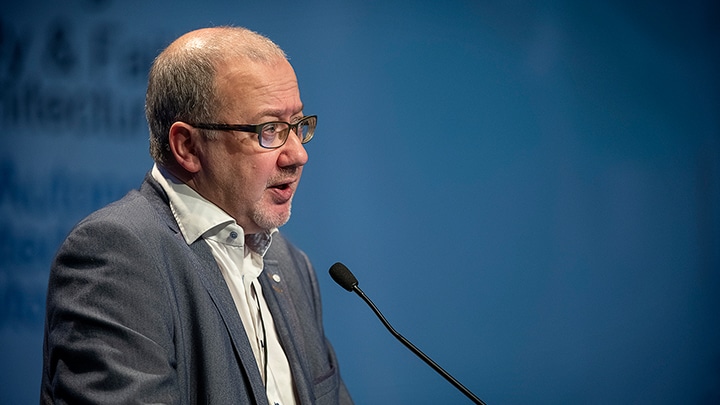While NXP’s leadership is innovating the technology solutions helping to quite literally drive the
future of autonomous or “smart” vehicles, we’re also helping write that future, thanks in large
part to our very own Patrick Pype, Director of Strategic Partnerships.
FEATURING

Patrick Pype
Director European Affairs at NXP

The IoV
Patrick is an outspoken advocate of a concept called “the Internet of Vehicles,” or “IoV,” which
suggests a novel and very actionable idea of looking at smart tech not only as augmenting
transportation but transforming how and what it accomplishes. The IoV, like the IoT, represents a
system that integrates computing, communications, data storage and connectivity to other vehicles
and infrastructure. Embracing this new way of thinking suggests significant development priorities
and opportunities.

A New Book on the Future of Smart Cars
Patrick is a prolific writer and recently contributed to a chapter in a book that may well become
the guide for such future development, entitled
Intelligent Technologies for Internet of Vehicles. We had a chance to ask him a few
questions about the IoV concept and what it will mean to users, customers and NXP (note: the
interview has been edited for length and clarity):
Marcus Borrmann: What is the Internet of Vehicles?
Patrick Pype: The IoV represents a fundamental shift in how we view and use
vehicles, from simply a mechanism to move from place to place to an automated device that is
integrated not only into our lives but to the other cars, pedestrians and infrastructure around
it. A similar shift happened to the telephone, which started out being used for talking but is now
a tool integrated into computational processing behind finance, commerce, education and
entertainment. Vehicles, like phones, are going through such a transformation. While possessing a
car or truck with a big engine or the latest design touches used to be sources of owner pride,
we’ll see that connectedness and intelligence values added to those criteria.”
MB: Why is a Book About the IoV Important Right Now?
PP:
The evolution of intelligent vehicular technologies has gotten so much publicity in recent years
and people have come up with different expectations for the pace and benefits of that development,
so it’s important for engineers and research scientists to have an objective, thoroughly
researched state of the art today and map for future evolution.
For instance, the role of electronics controllers in vehicles is evolving from distributed domains
to interconnected computing and server platforms, which has consequences for how you build the
architecture. It's something NXP works on every day with its customers, but it’s important to
share the standards and practices for this work, since we need every component of the overall
system—vehicles and infrastructure to work together.
MB: What Will Be Most Surprising to Readers?
PP: The complexity of how the electronics architecture of a car will look even a
few years from now, which will require fast innovation and iteration of components and how they
work together. Cameras, radar, LIDAR and other sensors will work together in far faster and more
robust ways than they do today in order to get a far better perception of the world around the
car.

MB: How Has Your Thinking Evolved Over the Years?
PP: I’m always struck by the importance of trust; no matter what the technology
benefit, even starting with adaptive cruise control, users need to be comfortable relying on the
role of the tech to keep them safe.
This fact is another reason for the book, as well as for my writing and that of others, since user
expectations have a direct impact on what they’re willing to try. Some of the publicity on
autonomous driving, especially in the U.S., may have led some people to believe that self-driving
cars were just around the corner, which raised their expectations not only for availability but
reliability.
The truth is that smart vehicle technology will keep evolving and widespread user availability
will be decided by the same sort of rules that dictated any other vehicular technology. There’s a
phrase that things need to be “road ready” before people are going to entrust their lives to a
technology or tool, and the IoV will be no exception.
MB: What’s the Role of Partnerships?
PP: Partnerships are much more important now than in the past because OEMs want
visibility into the underlying technologies on which their products can be based and built. For
companies like NXP, we’re no longer selling semiconductors as much as we’re collaborating with
customers on envisioning the optimal system architectures for their products and hence need to
work together with key stakeholders in the value chain.
NXP’s Public Cooperative Programs (PCP) division coordinates publicly funded innovation and R&D
collaborations with academic, government, nonprofit and corporate partners. NXP’s PCP team handles
all operational, financial and legal matters, allowing technical engineers to focus on the
research and development.
MB: What’s Your Prediction for the Next Five Years?
PP: The role of data to and within a vehicle will change from “big” to
“relevant,” as systems process more and more varied data, it is important to use only the relevant
data instead of all data. This is of crucial importance both for privacy as well as for power
reduction.
I think we’ll also see the IoV concept useful in other industries, such as factory robots and
drones. The innovations driving vehicular development, like better perception and environmental
awareness, will have many spin-offs in other areas of our lives.
I like to say that the IoV is the space program of our times. It will inevitably touch
everything.
Patrick Pype
You can learn more about Intelligent Technologies for Internet of Vehicles
here.
More information about ADAS and Highly Automated Driving, please click
here.








